mid-day reporters join travellers in their quest to get on to north-bound long-distance train and come a cropper
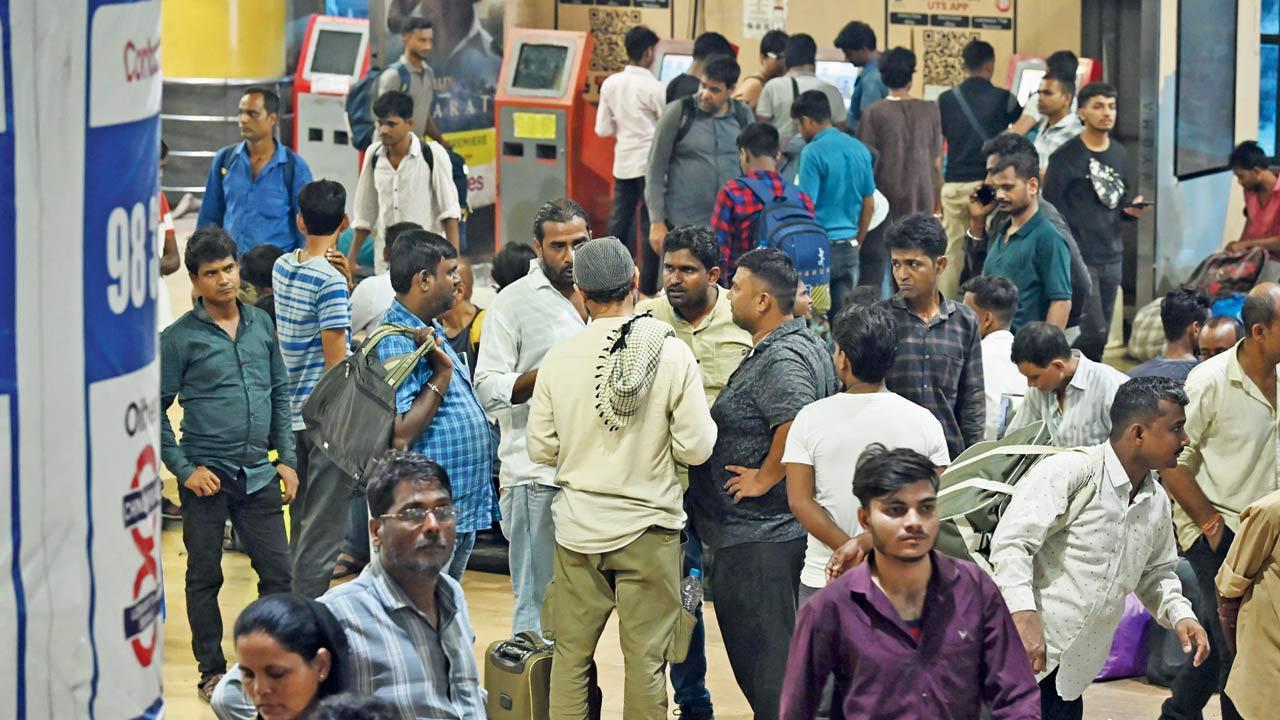
Crowded ticket counter at LTT on November 1. Pic/Anurag Ahire
Large crowds are a familiar sight at Mumbai’s Bandra Terminus (BDTS) and Lokmanya Tilak Terminus (LTT) during festival season, but recent scenes of chaos and the stampede at BDTS have raised urgent concerns. In response, mid-day conducted a ground-level investigation to uncover the factors behind these dangerous crowds and the conditions that make travelling especially hazardous for general coach passengers. While railway authorities have introduced some preventive measures after the Bandra incident, our findings at LTT in Kurla reveal that overcrowding and disorganised queues persist, particularly among those travelling to UP and Bihar for Chhath festivities.
ADVERTISEMENT
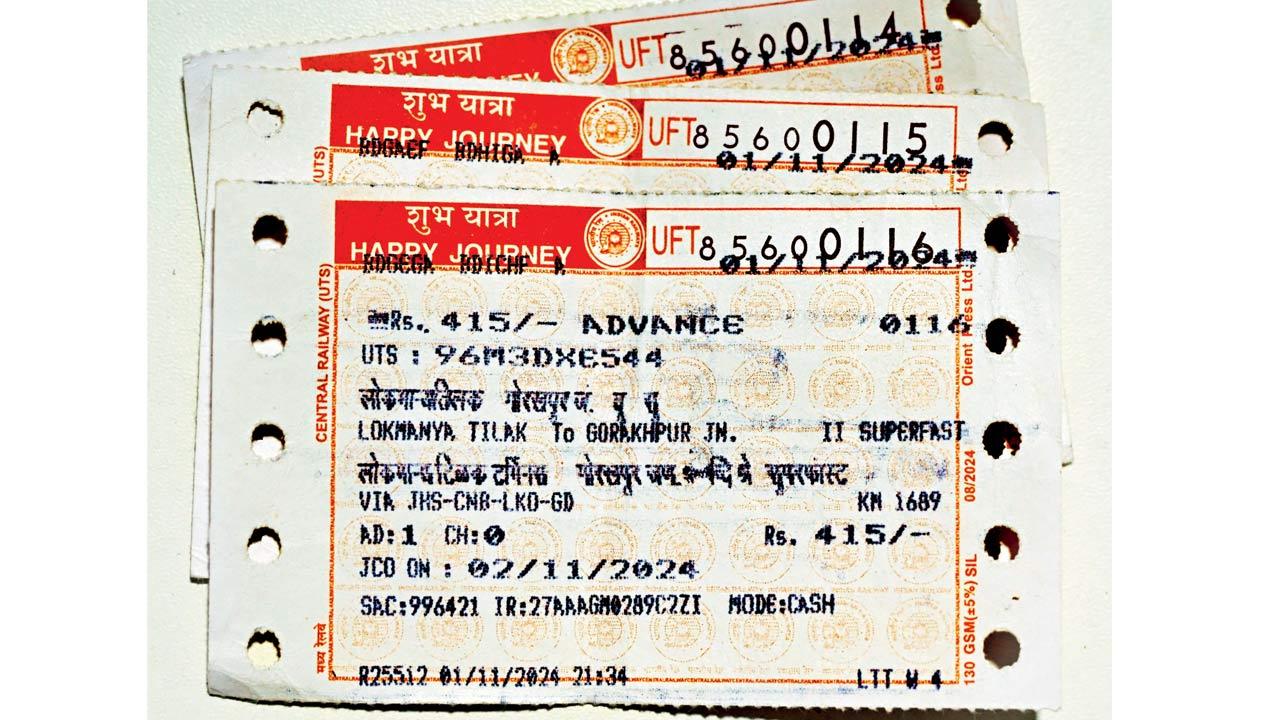 Tickets procured by mid-day’s reporters after paying a tout in advance
Tickets procured by mid-day’s reporters after paying a tout in advance
Amid a surge in passengers, many were left stranded in long lines, with some denied tickets as touts profited by exploiting desperate travellers. Joining the queues and riding along with passengers, mid-day reporters witnessed first-hand the struggles commuters face, from endless waits to unsafe boarding conditions, showing how overcrowded platforms remain a ticking time bomb for another stampede.
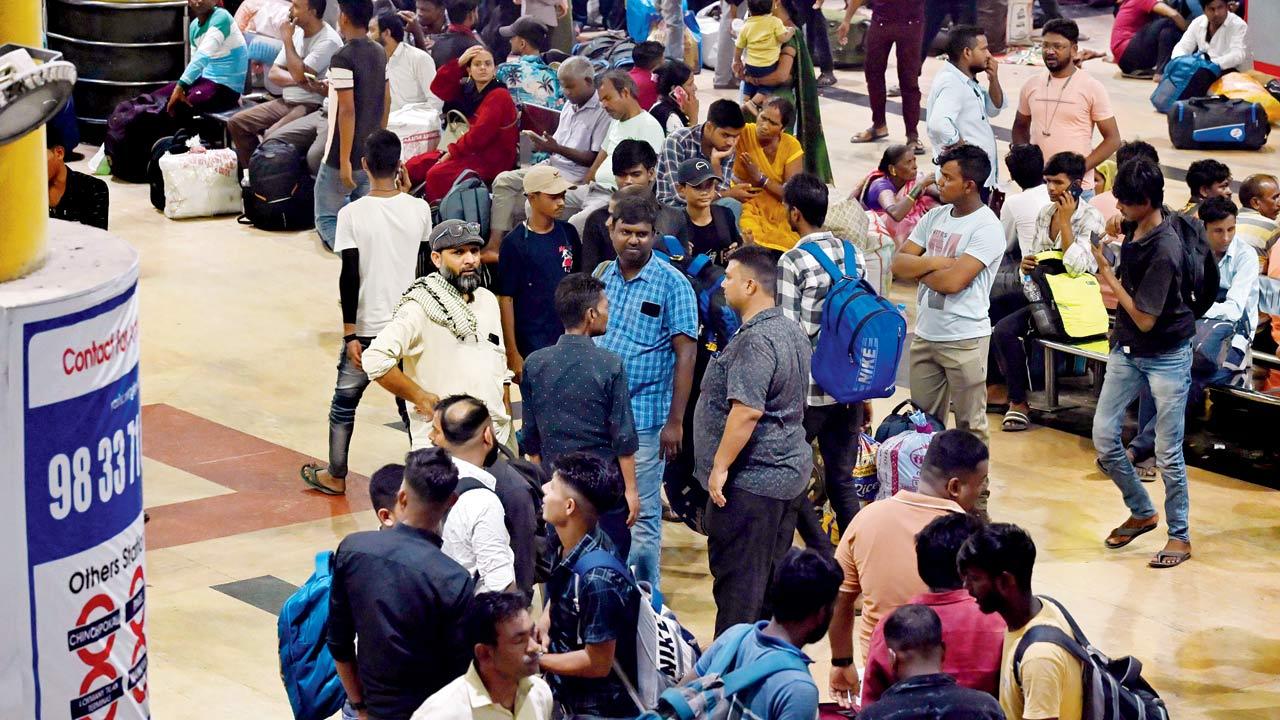 To understand the ground reality of UP-Bihar trains departing from Lokmanya Tilak Terminus (LTT), mid-day conducted an investigation on November 1. The mid-day reporters arrived at LTT at exactly 9.30 pm on Friday and planned to travel on the Kushinagar Express, scheduled to depart at 12.35 am on Saturday, November 2. Outside the station, thousands of passengers waited with their families in tents. RPF (Railway Protection Force) and GRP (Government Railway Police) personnel were present at the station. RPF constables stationed at a help desk provided information on train statuses and restricted passengers carrying large drums from entering.
To understand the ground reality of UP-Bihar trains departing from Lokmanya Tilak Terminus (LTT), mid-day conducted an investigation on November 1. The mid-day reporters arrived at LTT at exactly 9.30 pm on Friday and planned to travel on the Kushinagar Express, scheduled to depart at 12.35 am on Saturday, November 2. Outside the station, thousands of passengers waited with their families in tents. RPF (Railway Protection Force) and GRP (Government Railway Police) personnel were present at the station. RPF constables stationed at a help desk provided information on train statuses and restricted passengers carrying large drums from entering.
mid-day reporters travelled alongside these passengers to better understand their challenges, arriving at LTT at 9.30 pm on Friday. Passengers attempting to buy tickets at the counter were often turned away and told that tickets would only be available two to two and a half hours before departure. Meanwhile, touts were able to book tickets for various trains from select windows, charging passengers inflated prices and defrauding them.
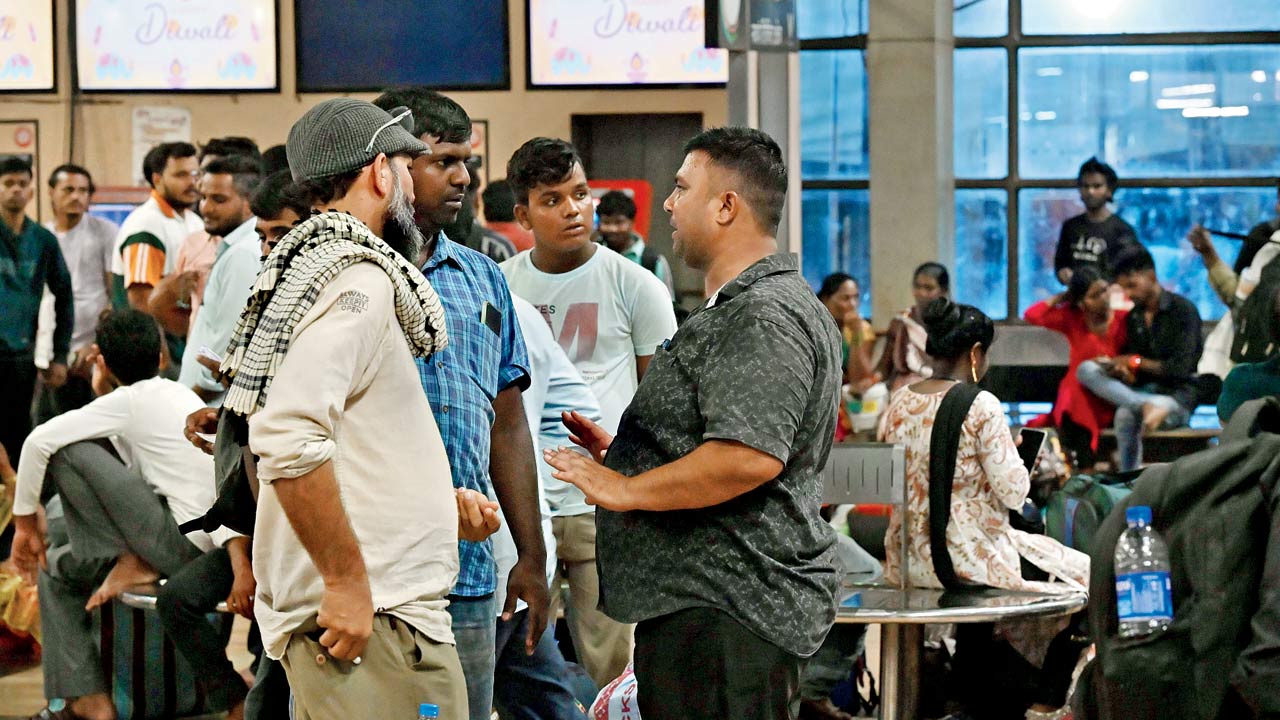 The mid-day team went to purchase tickets from the counter and, upon entering LTT, headed straight to the ticket counters, where long queues had formed. As the reporters waited in line, 5-6 touts approached them, offering tickets and even guaranteeing seats in the general compartment of the Kushinagar Express. The touts explained that ticket counter employees wouldn’t issue tickets for this train until two hours before departure. Several passengers also shared their experiences of being turned away until the two-hour mark. Although the actual ticket price from LTT to Gorakhpur was R415, the touts claimed the price to be R480 and charged R700 per passenger, which included a “guaranteed” seat in the general compartment. The reporters paid R2,100 for three tickets. By 10.30 pm, these touts had disappeared from LTT.
The mid-day team went to purchase tickets from the counter and, upon entering LTT, headed straight to the ticket counters, where long queues had formed. As the reporters waited in line, 5-6 touts approached them, offering tickets and even guaranteeing seats in the general compartment of the Kushinagar Express. The touts explained that ticket counter employees wouldn’t issue tickets for this train until two hours before departure. Several passengers also shared their experiences of being turned away until the two-hour mark. Although the actual ticket price from LTT to Gorakhpur was R415, the touts claimed the price to be R480 and charged R700 per passenger, which included a “guaranteed” seat in the general compartment. The reporters paid R2,100 for three tickets. By 10.30 pm, these touts had disappeared from LTT.
For those waiting on the platforms, the queues seemed never-ending. As reporters reached the counters to secure tickets for the general compartment, staff informed them that tickets would only be available two hours before the train’s scheduled departure. However, agents standing by the window managed to obtain tickets much earlier through backdoor channels, charging commissions.
 One of the touts bypassed the queue, approached counter number 4, and obtained three tickets for the reporters within a minute. Upon inspecting the tickets, the reporters noticed the printed price was R415. When questioned about the R700 charge, a tout explained that they paid R100 to the ticket counter staff and kept the rest as their income. The tout assured the reporters that they would have first priority in the queue at platforms 2-3 for boarding the general compartment. He also promised that a colleague would meet them there at 11 pm to assist with boarding and securing seats.
One of the touts bypassed the queue, approached counter number 4, and obtained three tickets for the reporters within a minute. Upon inspecting the tickets, the reporters noticed the printed price was R415. When questioned about the R700 charge, a tout explained that they paid R100 to the ticket counter staff and kept the rest as their income. The tout assured the reporters that they would have first priority in the queue at platforms 2-3 for boarding the general compartment. He also promised that a colleague would meet them there at 11 pm to assist with boarding and securing seats.
The real struggle for commuters begins on the platforms. Reporters, carrying luggage, observed a mass of people moving aimlessly on the platforms awaiting the Gorakhpur Express, scheduled for 12.35 am on Saturday. Roughly 1,000 commuters stood in a half-kilometre-long queue managed by RPF officials equipped with lathis.
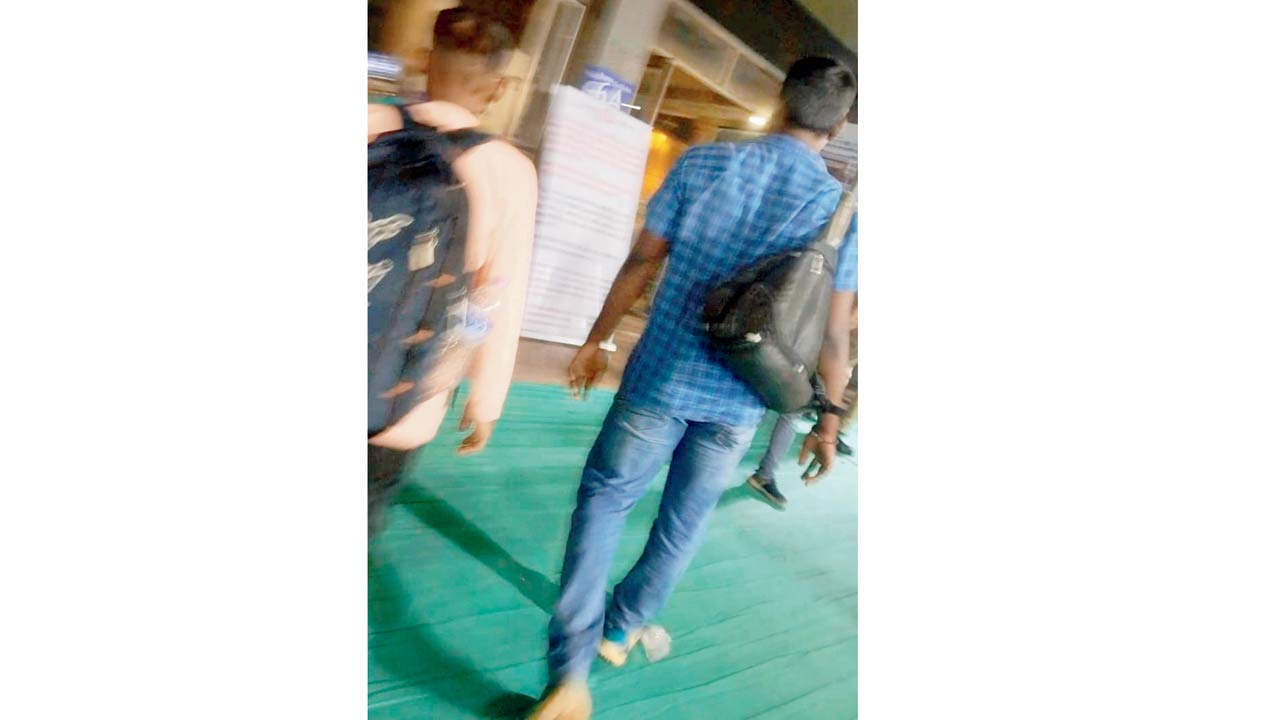 The reporters enter platforms 2-3 with their luggage, only to be shocked by the long queues for general compartments for the UP-Bihar trains. They reached the south end of the platforms and joined the queue for the Kushinagar Express, realising the touts had misled them with false information. Pics/Anurag Ahire
The reporters enter platforms 2-3 with their luggage, only to be shocked by the long queues for general compartments for the UP-Bihar trains. They reached the south end of the platforms and joined the queue for the Kushinagar Express, realising the touts had misled them with false information. Pics/Anurag Ahire
Many had been waiting on the platform since the afternoon, already having missed several trains. Some individuals tried to bypass the line but were held back by the presence of police. After nearly three hours of waiting, as the Khushinagar Express train approached, the platform turned chaotic, with commuters—who had seemed disciplined minutes earlier—breaking all order.
Any fear of police presence vanished, as commuters ignored lathi blows. The constables, who had held their ground against the crowd until the train arrived, now feared for their lives amidst the risk of a stampede. With no other choice, the officers moved away from the mob, leaving the crowd to fend for themselves. After almost 45 minutes of jostling, only about 10 per cent of the crowd—approximately a few hundred commuters—managed to enter the coach.
Some, desperate to board, clung to the doors, hoping for space inside once the train departed.
Disheartened passengers who couldn’t board lined up again for the next Gorakhpur Express, scheduled five hours later at 5.35 am on Saturday.
Since railway regulations restrict photography on platforms, we provide an illustration to help understand why there’s no assurance that the Bandra stampede won’t happen again.
Oct 27
Day stampede occurred at Bandra Terminus
10
No. of people injured in the stampede
10
per cent of crowd manged to board
9.45 pm multiple queues build up before the train arrives
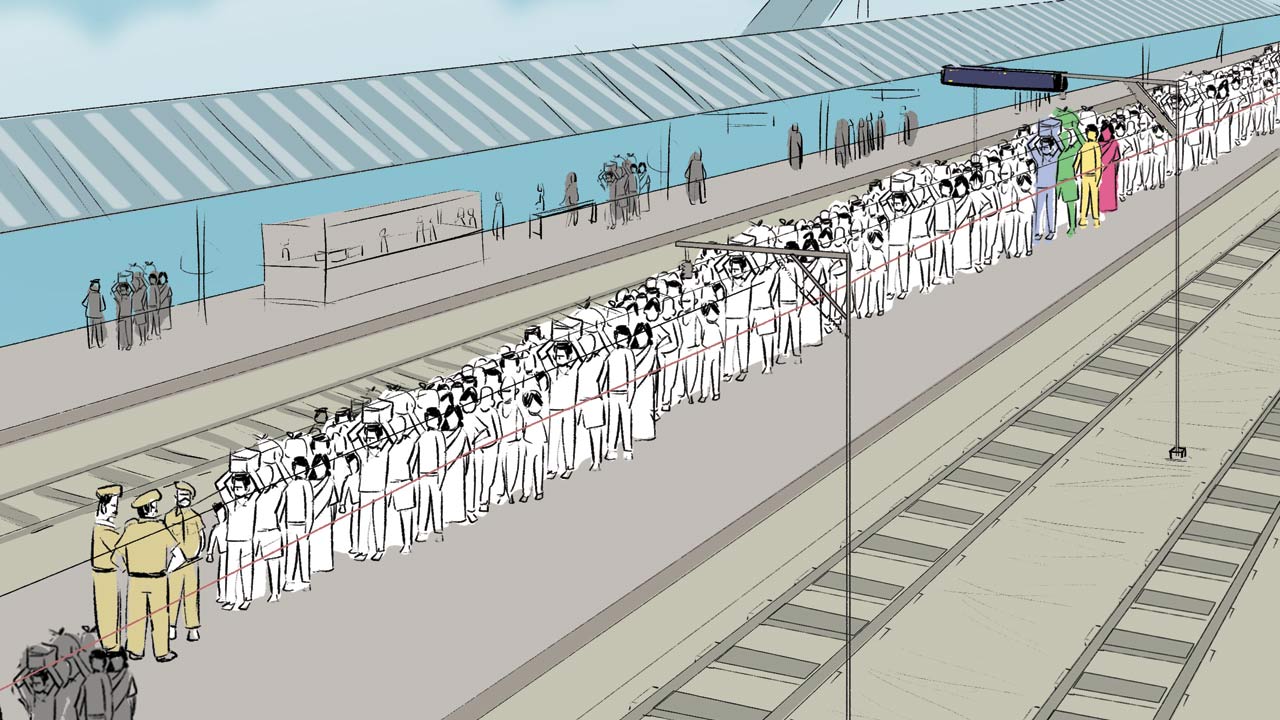
At platforms 2 and 3, a massive crowd gathered in multiple queues for various UP-Bihar-bound trains. Over 1,000 passengers waited in line for the Kushinagar Express. RPF personnel tried to manage the queues. The reporters noticed many passengers attempting to cut the line, resulting in skirmishes. RPF constables resorted to using lathis to maintain order and discipline. The reporters joined the long queue for the Kushinagar Express, hoping to secure a seat in the general compartment.
11.49 pm but rogue passengers break the queue when the train arrives
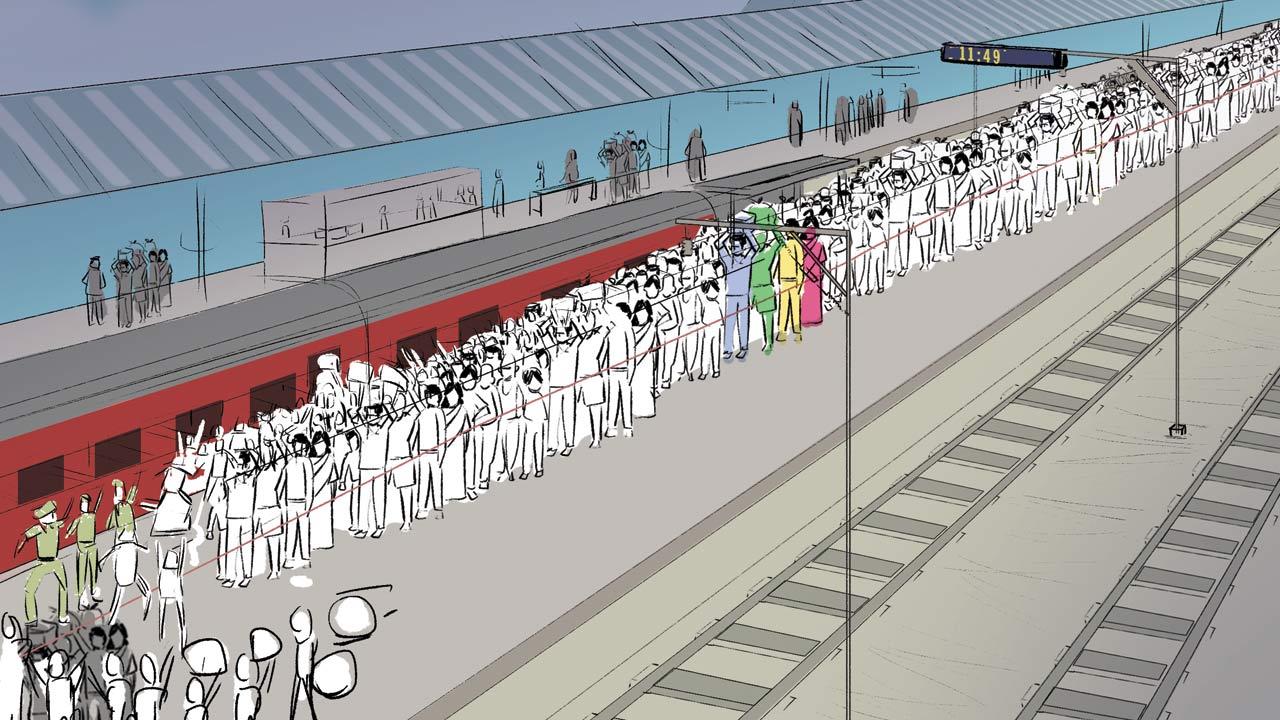
The Kushinagar Express arrived at 11.49 pm on Platform 2. RPF personnel had set up rope barricades. As the train approached, the crowd surged forward, breaking the queue and rushing toward the moving train to board the general compartment. The RPF personnel seemed overwhelmed and became spectators. Many passengers, including those with large drums, managed to board, while others climbed over each other to secure a spot. Only 200-300 passengers succeeded in boarding, while the majority remained in line.
5.30 am more passengers join the queue for another long wait
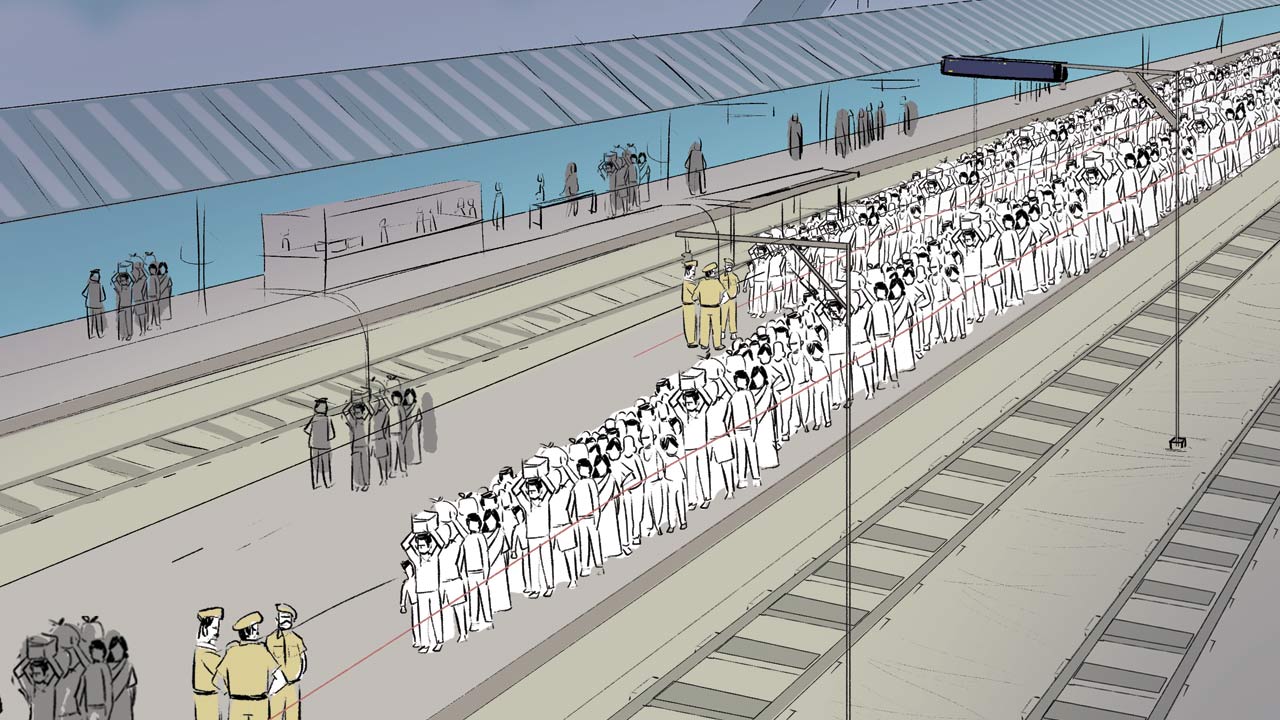
Due to overcrowding, the reporters were unable to board the Kushinagar Express. Their only remaining option was to catch the next train to Gorakhpur, scheduled for 5.30 am. They checked the queue for the 5.30 am train and found that 200-300 passengers were already waiting in line at platform 2. Illustrations/Uday Mohite
 Subscribe today by clicking the link and stay updated with the latest news!" Click here!
Subscribe today by clicking the link and stay updated with the latest news!" Click here!







